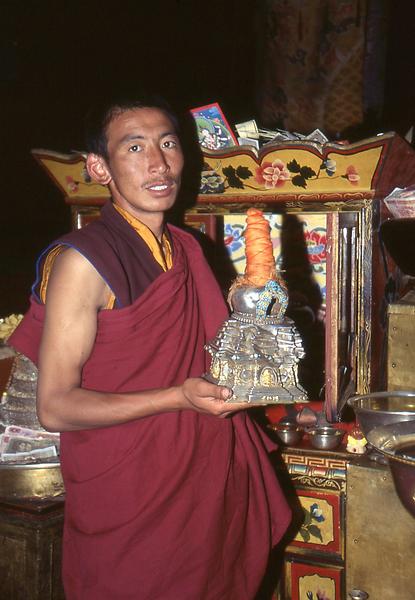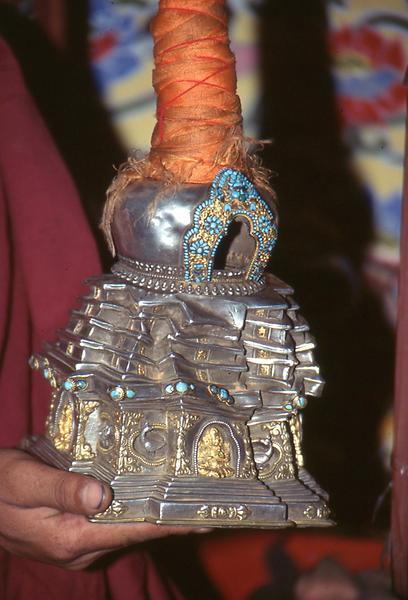Turquoise – Tibetan way to decorate men and gods#
byAll photos were taken by the author in the years 1991, 1993, 1995, 1999 and 2000 in the temples and monasteries of Lhasa, Tashilhunpo, Gyantse, Ganden, Drepung, Sera and Samye, or were taken in public in cities Lhasa, Shigatse and Gyantse. All pictures are part of the archive "Pictureflood Jontes" and have been made available to the Austria-Forum and Global-Geogrpahy.org.
One of the most beautiful and most liked semi-precious stones is the blue-green turquoise. From a chemical point of view it is just a copper-aluminum-phosphate that is found in many regions of the world. It is found in old mineral deposits that originally come from lava eruptions and is found in niches and chambers in such old remnants of lava flows.
To find a turquoise you do not have to dig very deep. Therefore, this gemstone was one of the earliest to be used. This started in the Chinese provinces of Hubei and Yunnan more than 3000 years ago. Marco Polo reports also from excavations sites in Sichuan province. Two thousand years ago the most important source of turquoise for the West was the Persian province of Chorasan. From Persia it came to Turkey and via trade routes to Western Europe.
The name Turkoys can be found in France in the 13th century. In the 15th century the stone was defined more clearly as Pierre turquoise, „Turkish stone“. For the Tibetan jewellery this stone is indispensable. In Tibet, mostly Afghan stones are processed. In Tibetan jewellery and in the ornamentation of images of deities also stones which are imported from far away are used. These are amber from the Baltic coasts and the magnificent precious corals from the Indian Ocean. When combining the stones, the turquoise is the most prominent one.
The crystalline structure of turquoise was discovered by the science very late. It can be seen in almost microscopic range. Therefore, the conventional processing is à la cabochon being a faceted, round or oval shape of cut of gemstones, where the top is curved outwards. In Tibet, festively dressed women wear turquoise in the hair or as a breast ornament.
In the cultic area, turquoise is used sumptuously. In particular, the crowns of the statues of Bodhisattvas are decorated with most gorgeous turquoise. The Tibetan Buddhists consider the Bodhisattvas as beings who have attained by themselves the enlightenment (bodhi). However, they renounce the nirvana in order to help the suffering creatures. Even on the transcendental Buddhas who are removed from the world in such a way that they don’t hear any more the prayers of humans and therefore are seen as examples only are this gemstone is used in large quantities. The patriarchs of Lamaismus, led by the creator of this form of Northern Buddhism Padmasambhava and the images of the Taras, female Padmasambhava are decorated lavishly. Even the wild looking protection deities with their terrifying faces are showing off the blue-green gems from Asia’s mountains.
Finally, also the burial mounds in the monasteries where abbots, Rimpoche, incarnated Buddhas and Bodhisattvas were embalmed and buried are decorated with turquoise. The most precious ones were used in Potala, the winter residence of Dalai Lamas in Lhasa.
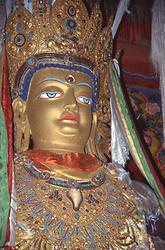
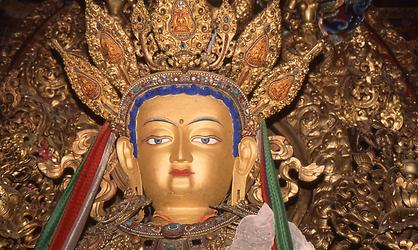
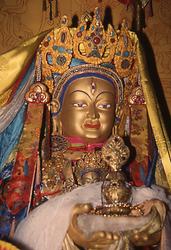
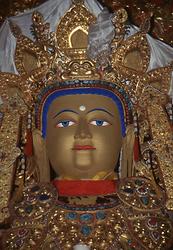
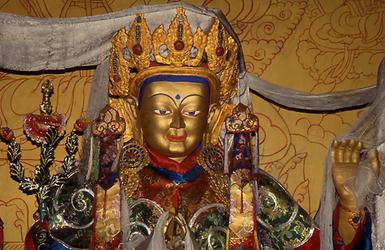
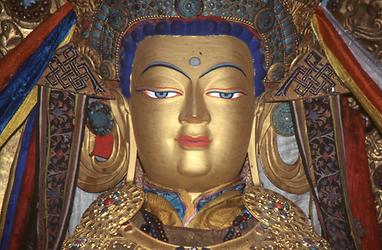
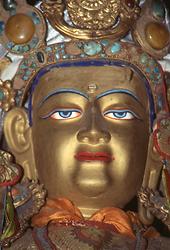
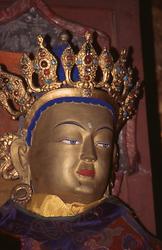

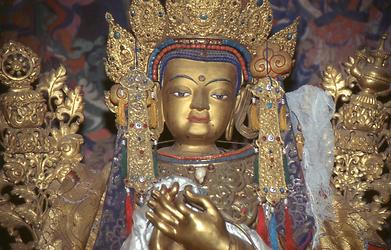
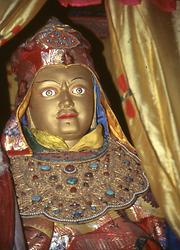
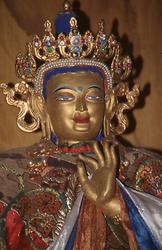
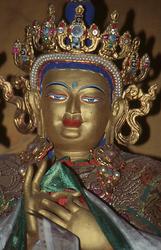
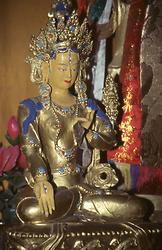
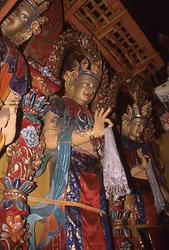
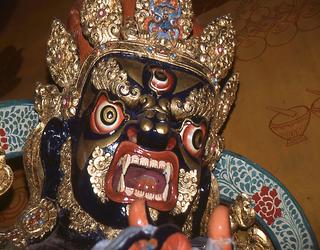
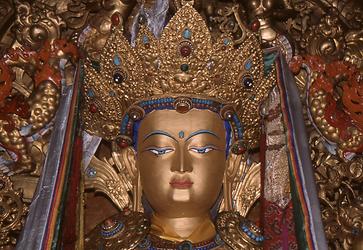
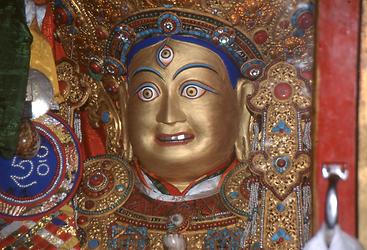
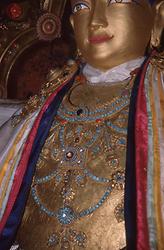


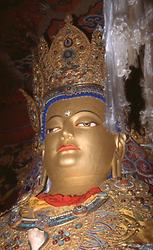

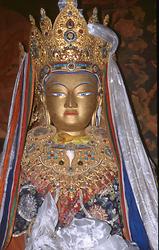
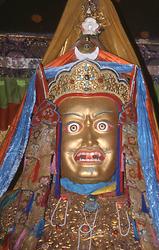
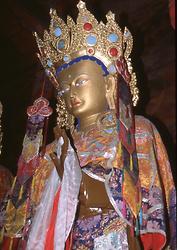
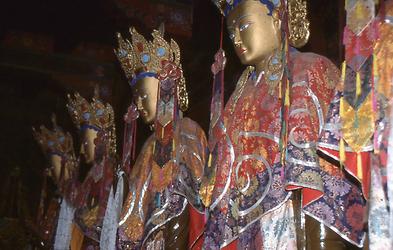
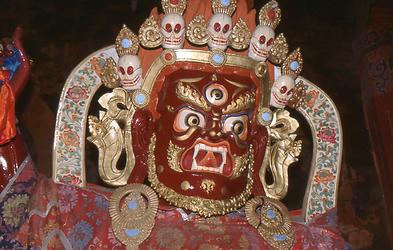
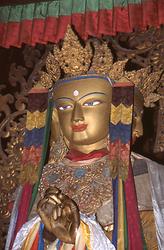
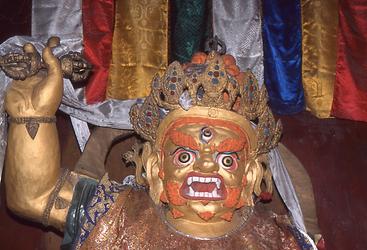
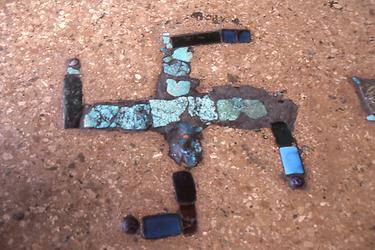
The Jowo, Tibetan most holy statue in the temple of Jokhang in Lhasa. #
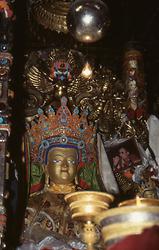
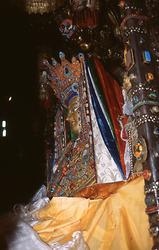
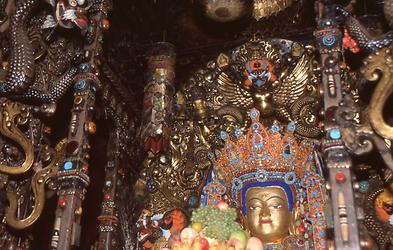

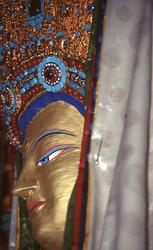
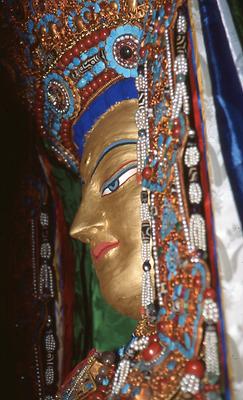
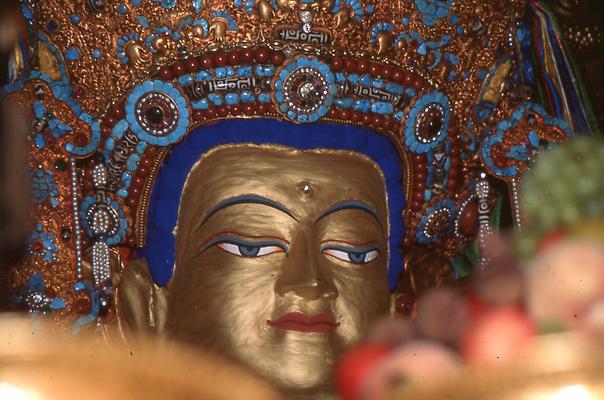
The burial mounds of Dalai Lammas in Potala in Lhasa and ornaments.#
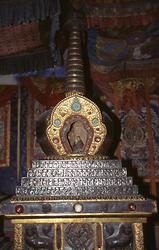
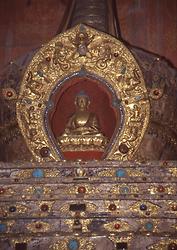
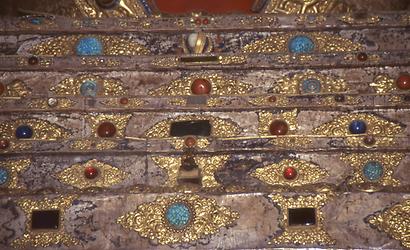
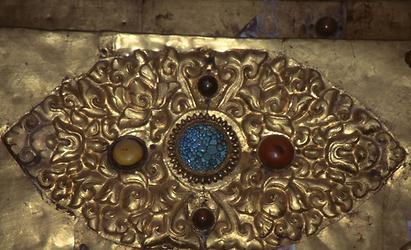

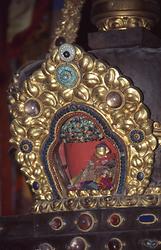
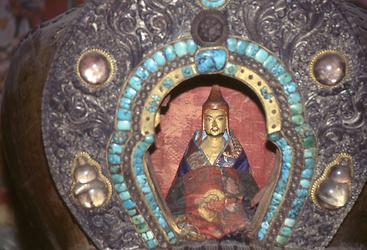
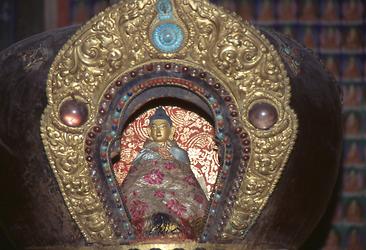
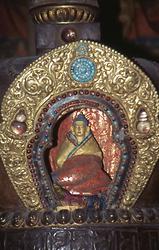
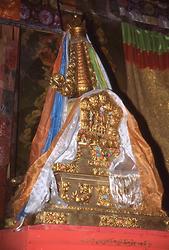
The tooth of Tsongkhapa#
The reliquary contains a tooth of the Tsongkhapa, the founder of the reformatory Gelegpa order Tsongkhapa, the so-called Yellow Hats, whose highest spiritual authority is the Dalai Lama. The pictures of the reliquary shown were still taken in 1995 in the monastery Ganden during the Communist Cultural Revolution organized by the Chinese occupiers that was particularly destructive in Tibet. In 1999 the precious piece was already gone. It was confiscated by Chinese authorities.
How to struggle against a scarce landscape #
One gets the impression that in such scarce landscapes people are looking for a balance. The need for beauty, for jewellery has reached such an extent that especially women decorate their clothes with lush jewellery on which the turquoise plays a special role. Men are more modest. They wear only a solitaire earring with turquoise and coral.
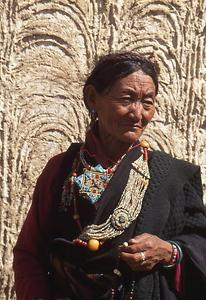
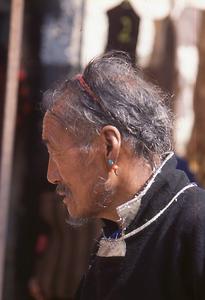
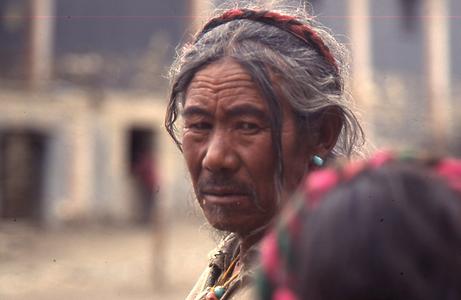
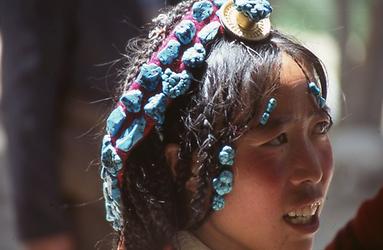
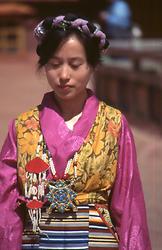
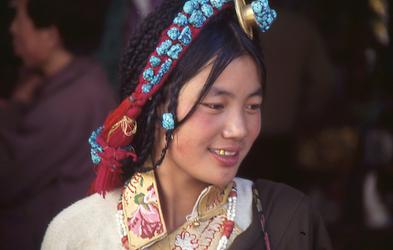
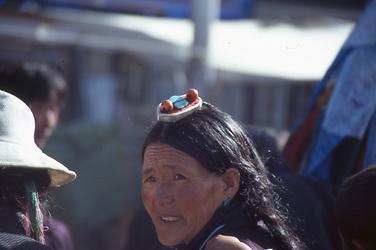
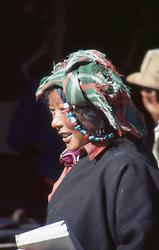
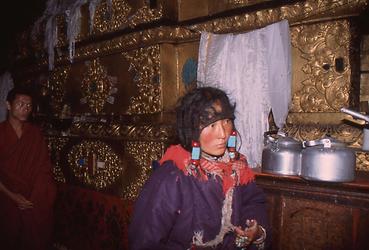
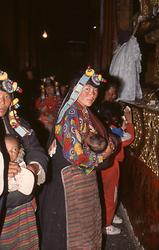
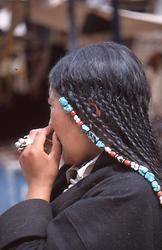
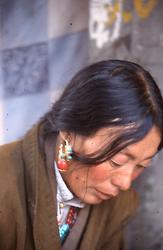
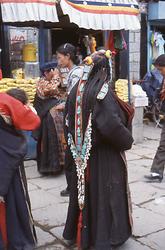
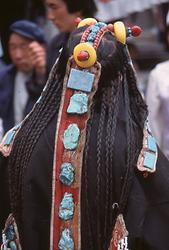
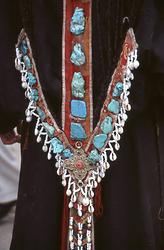
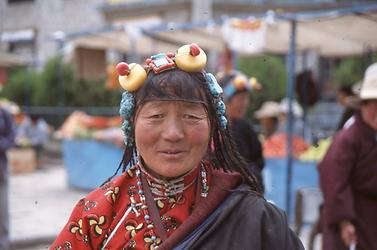
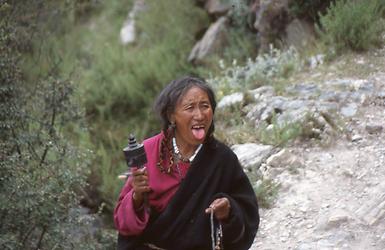
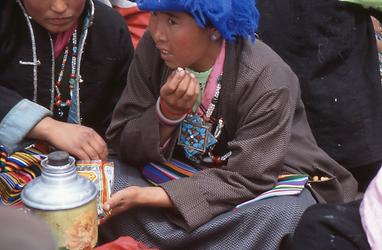
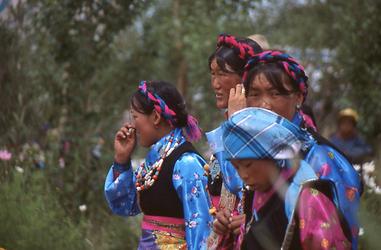
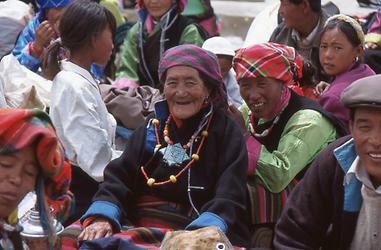
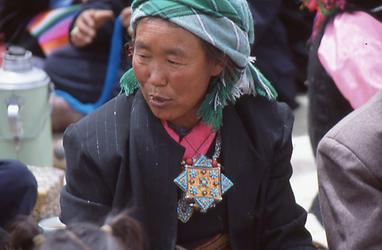
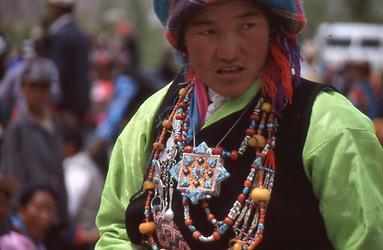
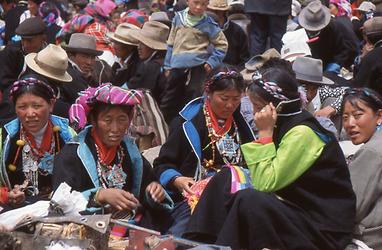
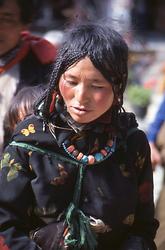
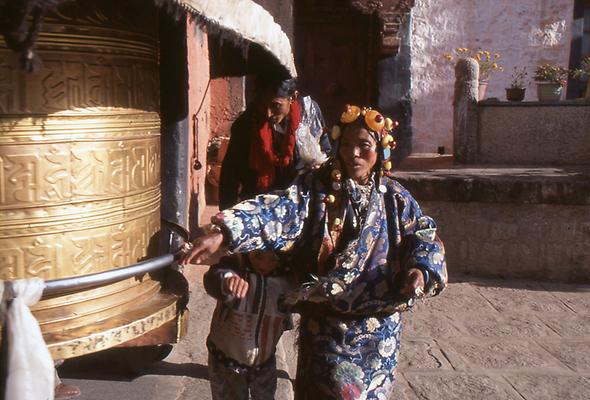
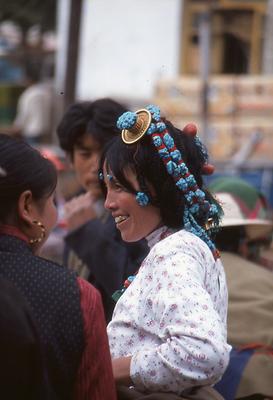
More pictures on Tibet and China
